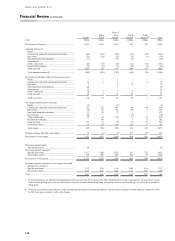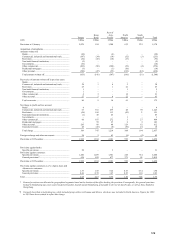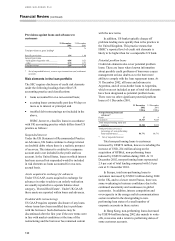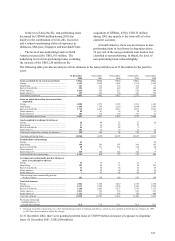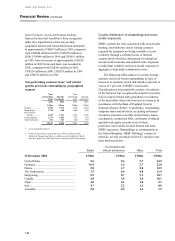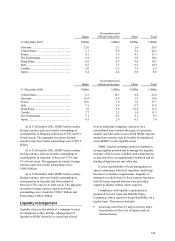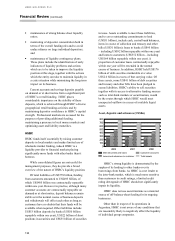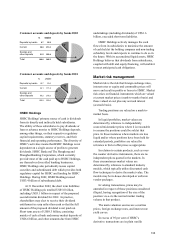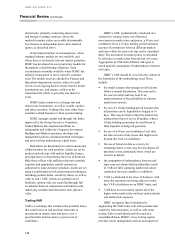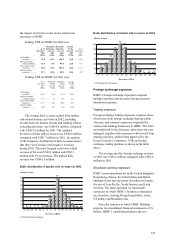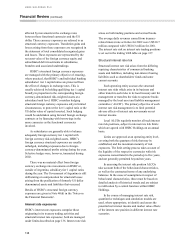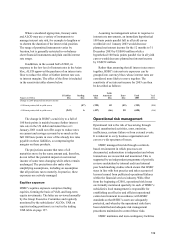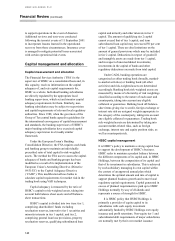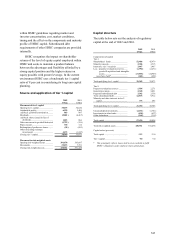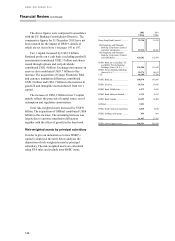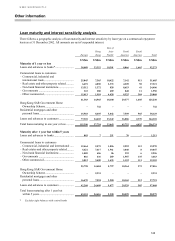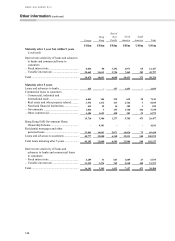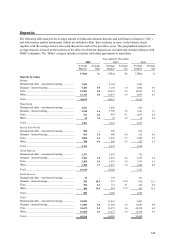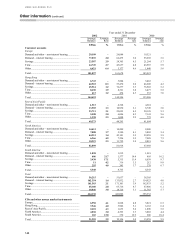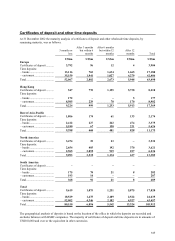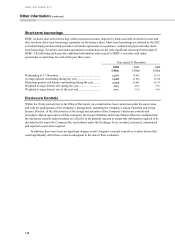HSBC 2002 Annual Report Download - page 140
Download and view the complete annual report
Please find page 140 of the 2002 HSBC annual report below. You can navigate through the pages in the report by either clicking on the pages listed below, or by using the keyword search tool below to find specific information within the annual report.
HSBC HOLDINGS PLC
Financial Review (continued)
138
affected by movements in the exchange rates
between these functional currencies and the US
dollar. These currency exposures are referred to as
structural currency exposures. Translation gains and
losses arising from these exposures are recognised in
the statement of total consolidated recognised gains
and losses. These exposures are represented by the
net asset value of the foreign currency equity and
subordinated debt investments in subsidiaries,
branches and associated undertakings.
HSBC’s structural foreign currency exposures
are managed with the primary objective of ensuring,
where practical, that HSBC’s and individual banking
subsidiaries’ tier 1 capital ratios are protected from
the effect of changes in exchange rates. This is
usually achieved by holding qualifying tier 1 capital
broadly in proportion to the corresponding foreign-
currency-denominated risk-weighted assets at a
subsidiary bank level. HSBC considers hedging
structural foreign currency exposures only in limited
circumstances, to protect the tier 1 capital ratio or the
US dollar value of capital invested. Such hedging
would be undertaken using forward foreign exchange
contracts or by financing with borrowings in the
same currencies as the functional currencies
involved.
As subsidiaries are generally able to balance
adequately foreign currency tier 1 capital with
foreign currency risk-weighted assets, HSBC’ s
foreign currency structural exposures are usually
unhedged, including exposures due to foreign-
currency-denominated profits arising during the year.
Selective hedges were, however, transacted during
2002.
There was no material effect from foreign
currency exchange rate movements on HSBC or,
outside of Argentina, subsidiary tier 1 capital ratios
during the year. The Government of Argentina is still
deliberating on compensation for structural losses
arising from the pesification of formerly US dollar
denominated assets and liabilities that occurred.
Details of HSBC’s structural foreign currency
exposures are given in Note 40(d) in the ‘Notes on
the Financial Statements’ .
Interest rate exposures
HSBC’s interest rate exposures comprise those
originating in its treasury trading activities and
structural interest rate exposures; both are managed
under limits described on page 136. Interest rate risk
arises on both trading positions and accrual books.
The average daily revenues earned from treasury-
related interest rate activities for 2002 were US$10.7
million compared with US$10.3 million for 2001.
The interest rate risk on interest rate trading positions
is set out in the trading VAR table on page 137.
Structural interest rate risk
Structural interest rate risk arises from the differing
repricing characteristics of commercial banking
assets and liabilities, including non-interest bearing
liabilities such as shareholders’ funds and some
current accounts.
Each operating entity assesses the structural
interest rate risks which arise in its business and
either transfers such risks to its local treasury unit for
management or transfers the risks to separate books
managed by the local asset and liability management
committee (‘ALCO’ ). The primary objective of such
interest rate risk management is to limit potential
adverse effects of interest rate movements on net
interest income.
Local ALCOs regularly monitor all such interest
rate risk positions, subject to interest rate risk limits
which are agreed with HSBC Holdings on an annual
basis.
Limits are approved at an operating entity level,
covering both the quantum of risk that may be
established, and the maximum maturity of risk
exposures. The limit setting process takes account of
the liquidity of the respective currencies with risk
exposures concentrated in the period up to five years,
and not generally permitted beyond ten years.
In assessing the interest risk position ALCOs
take account both of the behavioural characteristics,
as well as the contractual terms of any underlying
balances. In the cases of assumptions in respect of
behavioural characteristics, these must be based on
detailed analysis of historical trends and are subject
to ratification by a central function within HSBC
Holdings.
In the course of managing interest rate risk,
quantitative techniques and simulation models are
used, where appropriate, to identify and assess the
potential net interest income and market value effects
of the interest rate position in different interest rate
scenarios.


